
Green Roofs are a stormwater best management practice that falls under the umbrella of Low-Impact Development (LID) approaches. LID is a highly effective strategy for controlling urban stormwater runoff that uses land planning and engineering approaches to reduce the impact of new and existing developments. LID employs lot-level techniques, such as green roofs that retain, detain, filter, treat, use, and reduce stormwater runoff. The result is less surface water runoff and less pollution routed to our local streams and rivers.
Roofs are one of the most significant sources of concentrated runoff from developed sites. A green roof, sometimes called an eco-roof, living roof or rooftop garden, is the roof of a building that is typically covered with a layer of waterproofing material, then with soil or another planting medium, and planted with grasses, flowers, groundcover, or even shrubs and trees. It may also include additional layers such as a root barrier and drainage and irrigation systems. Managing rooftop runoff has particular value in urbanized settings where space for other BMPs is limited.
Based on documented experience and studies, a green roof offers several important benefits not found in conventional roofing:
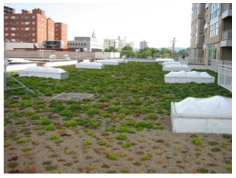 Shadyside Giant Eagle Green Roof
Shadyside Giant Eagle Green Roof
In 2004, 3 Rivers Wet Weather awarded multiple grants for the installation or monitoring of green roofs throughout the City of Pittsburgh and its surrounding neighborhoods. 3RWW considered both extensive and intensive roof systems. Extensive green roofs are ecological roof covers with limited human access and typically have limited sectional depth with thinner and less numbers of layers. Intensive roofs are more like the traditional roof gardens, with deeper sectional depths, and may provide access and recreation space.
The following projects were awarded grants:
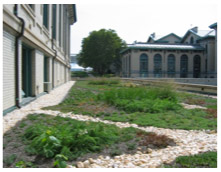
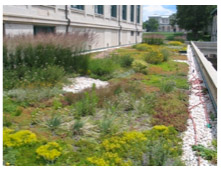
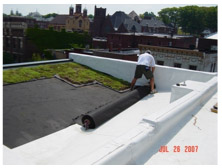 Installation of Homestead green roof in 2007
Installation of Homestead green roof in 2007
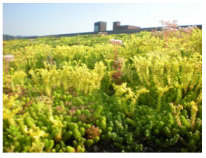 Homestead green roof one year later in 2008
Homestead green roof one year later in 2008
In addition to funding the construction of the green roof projects, 3RWW funded the development of monitoring protocols and programs that will provide uniform standards to evaluate the performance of these roofs.
1. The project at Carnegie Mellon University titled, Development of a Green Roof Monitoring Protocol and Green Roof Stormwater Modeling Tool, was funded by 3RWW for $70,448. The final report provides a summary of the different methods, procedures, and sensors available to monitor stomwater runoff from conventional and green roofs. It can also be used as a guide to determine appropriate methods, procedures and sensors for monitoring roof runoff for different applications and roof types. The study identified best practices currently in use in Europe and the U.S. for monitoring stormwater retention and diversion and stormwater quality on green roof projects, and assessing the suitability of these monitoring practices for implementation in Pennsylvania. The recommended methods and procedures will then be applied to all green roof projects.
2. The University of Pittsburgh project titled, Green Roof Instrumentation, Data Collection and Analysis, was funded by 3RWW for $99,356. The measurement protocol monitored water quality and quantity with a combination of installed instrumentation, sample collection and laboratory testing for both the Shadyside Giant Eagle roof and the Homestead green roof. Details are available in the final report.
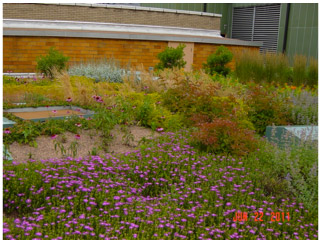 Allegheny County Office Building green roof installed in June 2010.
Allegheny County Office Building green roof installed in June 2010.
The Allegheny County Office Building is another good example of a green roof in the City of Pittsburgh. Completed in June 2010, the roof, which uses four different types of technologies, showed a reduction of 40-50 degrees in temperature over the first two months and is expected to save 10-20 percent in overall heating and cooling costs. Eight dataloggers and a weather station were put in place to help measure the benefits of the green roof, and the County plans to partner with the Art Institute on growing hard to find herbs for their culinary program.
See the Green Roof Guide for information on green roof locations, technologies and green roof installation specialists.